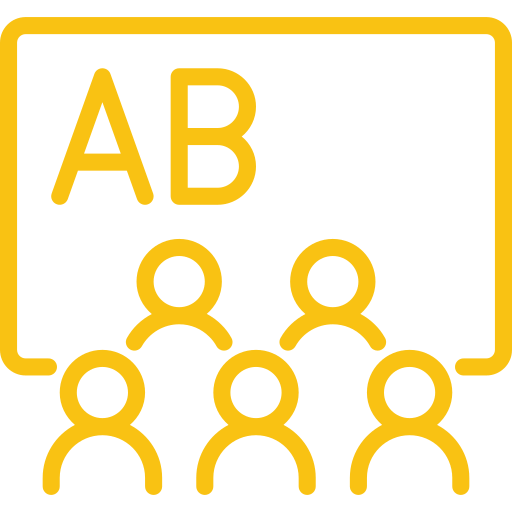All across the United States, there is a huge demand right now for teachers to help English learners. Every grade level, from early childhood education to secondary education, is struggling to find ESL and bilingual teachers.
Most certified teachers can easily add ESL certification (we specialize in the state of Illinois, but can help other states as well) to their teaching license, allowing them to do more than just teach in their content area. A bilingual education endorsement usually just requires a little more work (or passing a target language proficiency test), as outlined in this article.
The differences
If you’re a teacher looking to enhance your skill set and expand your career opportunities, pursuing a bilingual or ESL (English as a Second Language) endorsement can be a game-changer.
These endorsements not only demonstrate your expertise in supporting students with diverse language backgrounds but also increase your marketability in today’s multicultural education landscape. In this article, we will delve into the requirements and differences between bilingual and ESL endorsements, helping you make an informed decision about which path to pursue.
1. Understanding Bilingual Endorsements
Bilingual endorsements focus on developing teachers’ proficiency in two languages, with the aim of effectively instructing students who are learning English as their second language. In order to obtain a bilingual endorsement, you typically need to meet certain criteria:
a) Language Proficiency: Demonstrating fluency in both English and another language is crucial. Some states or institutions may require a language proficiency exam.
b) Coursework: Completing specific coursework related to bilingual education is often required. Topics covered may include second language acquisition theories, bilingual teaching strategies, cultural competence, and bilingual literacy development.
c) Practicum or Field Experience: Gaining practical experience working with English language learners (ELLs) through a student teaching placement or supervised practicum is an essential component of a bilingual endorsement program.
d) State-specific Requirements: Be aware that each state may have its own unique requirements for obtaining a bilingual endorsement. It is important to research and understand the specific regulations in your state.
*Some states, such as Illinois, have adapted the rules around field experience to help meet the high demand for school districts. In some cases you may be able to meet the required clock hours of working with bilingual or ESL students by documenting the current classroom experience you have (and approved by a district administrator such as your assistant principal or higher).
2. Exploring ESL Endorsements
ESL endorsements, on the other hand, concentrate on equipping teachers with specialized skills to effectively instruct students who are English language learners. The requirements for obtaining an ESL endorsement may include:
a) Coursework: Completing coursework related to ESL education is essential. The coursework typically covers topics such as second language acquisition theories, ESL teaching strategies, cultural competence, linguistics, and assessment and evaluation of ELLs. (Much of the work is the same as the bilingual endorsement, with typically one course being different).
b) Field Experience: Similar to bilingual endorsements, gaining practical experience by working with ELLs is crucial. This can be achieved through a student teaching placement or supervised practicum in ESL classrooms.
c) State-specific Requirements: Just like with bilingual endorsements, the requirements for an ESL endorsement can vary by state. Researching the specific regulations in your state is vital.
3. Key Differences between Bilingual and ESL Endorsements
While both endorsements focus on supporting English language learners, there are distinct differences to consider:
a) Language Focus: Bilingual endorsements emphasize developing proficiency in two languages, providing instruction in both the students’ native language and English. ESL endorsements, on the other hand, primarily focus on English language instruction.
b) Classroom Placement: Teachers with bilingual endorsements often work in dual-language or transitional bilingual programs, where students receive instruction in both languages. ESL-endorsed teachers typically work in ESL pull-out programs or self-contained ESL classrooms.
c) Student Population: Bilingual endorsements cater to students who come from diverse language backgrounds, including those who are already proficient in English but require additional support in their native language. ESL endorsements primarily target students who are non-native English speakers.
d) Program Structure: Bilingual education programs aim to develop bilingualism and biliteracy skills, fostering academic success in both languages. ESL programs focus on providing English language instruction and support to help students acquire English proficiency.
Conclusion
Obtaining a bilingual or ESL endorsement is a valuable professional investment for teachers seeking to support English language learners effectively.
While bilingual endorsements emphasize two-language proficiency and provide instruction in both languages, ESL endorsements focus primarily on English language instruction.
By understanding the requirements and differences between these endorsements, you can make an informed decision about which path aligns best with your goals and the needs of your students.
Remember to check the specific regulations in your state to ensure you meet all the necessary criteria.
Enhancing your expertise in bilingual or ESL education opens doors to exciting opportunities and helps create inclusive learning environments where all students can thrive.
How we can help at MTI
If you’re looking for a master’s degree in ESL/ELL, we can help. Through our partnership with Colorado State University Pueblo, you can get your degree for just under $8200. As always, you’ll need to check with your local governing agency to see how this will impact your license.
As with all of our master’s programs, the degree program will be a mix of online and distance courses, half of which come from CSUP, and half from MTI.
If you are looking for an endorsement to become an ESL teacher, or to be endorsed to work in bilingual settings, we have endorsements through Calumet College of St. Joseph approved by the Illinois State Board of Education.
If you would like to see how our program stacks up to other online programs, check out our article Cost of ESL Endorsement in Illinois Price Guide to compare the cost and time required compared to other institutions in Illinois.
And if you are just looking to move over on the pay scale but would like to sample some graduate level courses, we have those as well. Each class counts for 3 semester hours or credit hours, helping you take the next step in helping speakers of other languages, while at the same time getting that much needed pay bump.





















